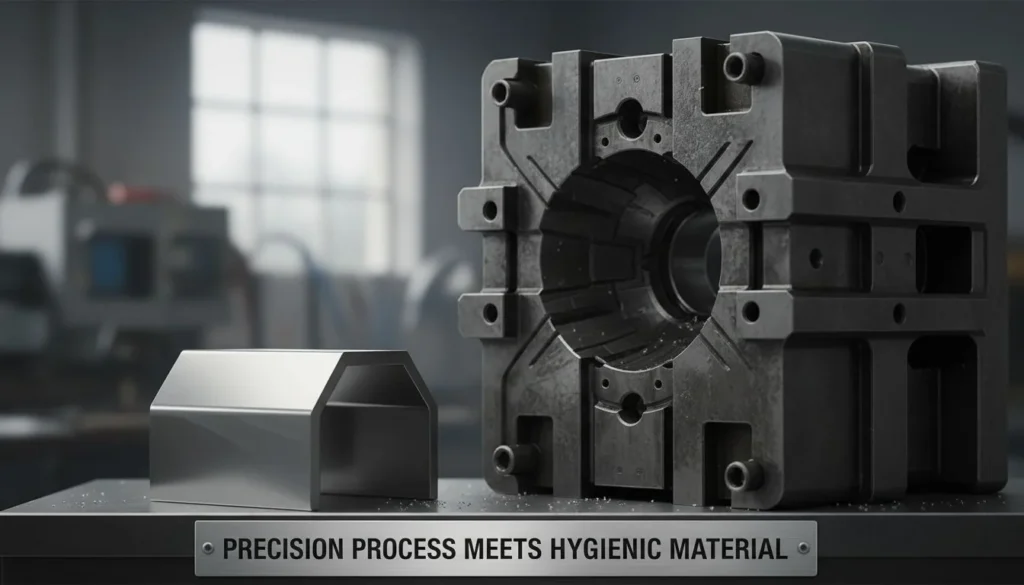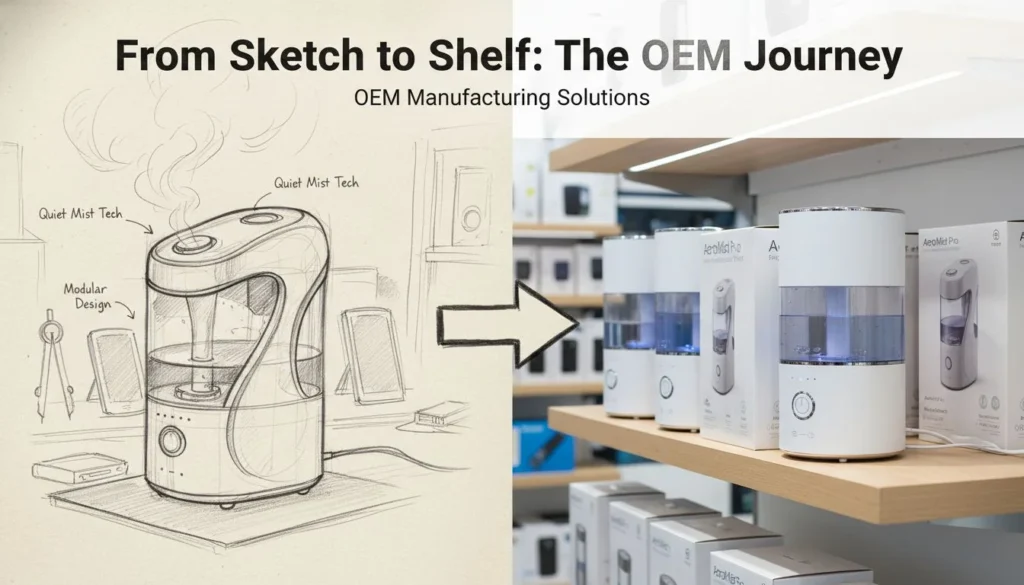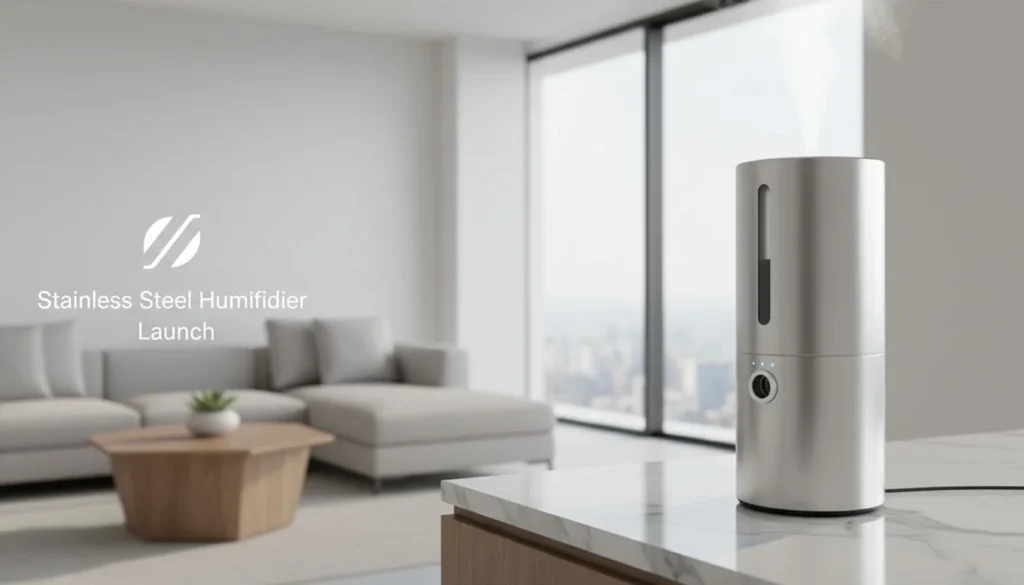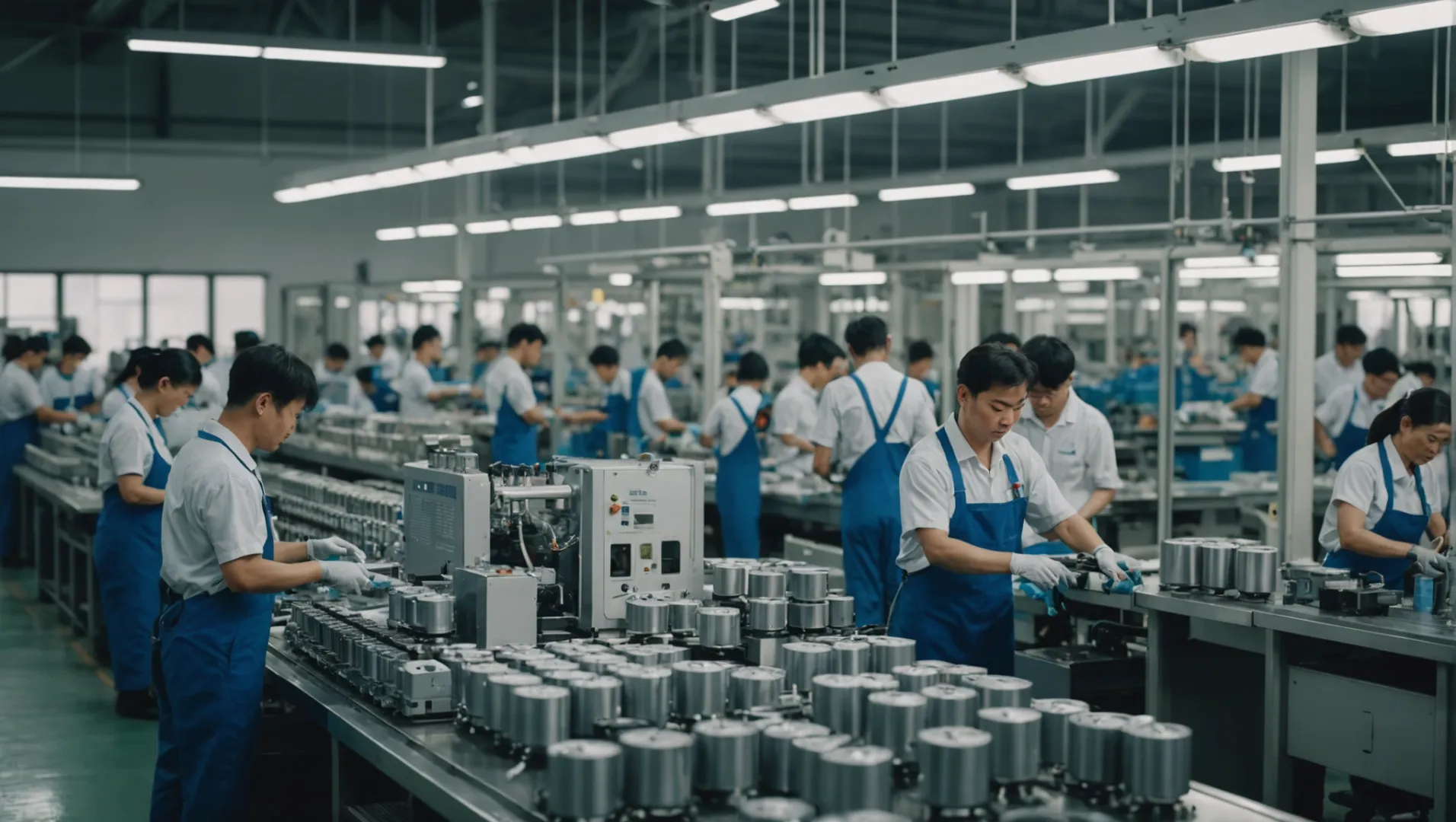
Vi siete mai chiesti quale sia il percorso del vostro purificatore d'aria? Il luogo in cui è stato prodotto può rivelare molto sulla sua qualità ed efficacia.
I purificatori d'aria Molekule sono progettati negli Stati Uniti e assemblati a Shanghai, in Cina. Questa configurazione solleva dubbi sulla qualità del prodotto, poiché l'assemblaggio avviene in uno stabilimento non specializzato in purificatori d'aria, con potenziali ripercussioni sulle prestazioni.
Anche se conoscere i dettagli di base della produzione è utile, è importante approfondire l'argomento. La comprensione delle implicazioni di queste pratiche di produzione può influenzare in modo significativo la decisione di acquisto. Approfondiamo i fattori chiave che influenzano le prestazioni e l'affidabilità.
I purificatori d'aria Molekule sono assemblati a Shanghai, in Cina.Vero
I purificatori d'aria Molekule sono progettati negli Stati Uniti e assemblati a Shanghai.
In che modo l'ubicazione della produzione influisce sulla qualità dei depuratori d'aria?
Il luogo di produzione di un purificatore d'aria può avere un impatto significativo sulle sue prestazioni, sul design e sulla qualità complessiva.
Il luogo di produzione di un purificatore d'aria può influire sulla sua qualità a causa delle differenze di competenza, tecnologia e standard di controllo della qualità. Ad esempio, l'assemblaggio di prodotti in strutture non specializzate in purificatori d'aria può portare a prestazioni incoerenti e a problemi di affidabilità.

Importanza della competenza e dell'esperienza
La produzione di un purificatore d'aria non consiste solo nell'assemblaggio di parti, ma comporta processi complessi che richiedono conoscenze specialistiche. La progettazione e l'implementazione del sistema di ventole e del condotto dell'aria sono elementi cruciali che definiscono l'efficienza di un purificatore. Aziende come HisoAir, con oltre due decenni di esperienza, impiegano tecnologie avanzate come Storm Motor e Decibel cancellation, che migliorano notevolmente le prestazioni. Al contrario, quando un'azienda come Molekule assembla i suoi prodotti in strutture prive di tale esperienza, rischia di compromettere la qualità.
Impatto sulle prestazioni
La produzione in uno stabilimento che non ha competenze specifiche in materia di purificatori d'aria può dare origine a prodotti con prestazioni insufficienti. Per esempio, gli esperti hanno sollevato dubbi sul fatto che le pratiche di assemblaggio di Molekule abbiano un impatto sull'efficacia dei loro purificatori d'aria. Fattori come una progettazione impropria dei condotti dell'aria e sistemi di ventole non ottimali possono portare a una scarsa circolazione dell'aria e a livelli di rumore più elevati. Collaborando con produttori esperti, le aziende possono garantire che i loro prodotti siano efficaci e silenziosi, migliorando la soddisfazione dei consumatori.
| Caratteristica | Struttura specializzata | Struttura non specializzata |
|---|---|---|
| Progettazione del sistema di ventilazione | Ottimizzato | Spesso non ottimale |
| Gestione del livello di rumore | Tecnologia avanzata | Base o Nessuno |
| Standard di controllo della qualità | Alto | Variabile |
Controllo qualità e standard
Le strutture dedicate alla produzione di purificatori d'aria generalmente aderiscono a rigorosi protocolli di controllo della qualità. Questo garantisce che ogni unità soddisfi gli standard desiderati prima di raggiungere i consumatori. I centri di produzione che non hanno questo tipo di attenzione potrebbero non mantenere lo stesso livello di garanzia della qualità. Conoscere l'origine del purificatore d'aria può fornire indicazioni sulla sua potenziale longevità ed efficacia.
Considerazioni sui consumatori
Quando si acquista un purificatore d'aria, bisogna considerare l'esperienza del produttore e il luogo in cui è stato assemblato. Un prodotto realizzato in una struttura specializzata ha maggiori probabilità di funzionare bene e di durare più a lungo. Per prendere una decisione informata, i consumatori dovrebbero ricercare il pratiche di produzione1 dei marchi a cui sono interessati. Questa conoscenza può guidarli nella scelta di prodotti in linea con le loro aspettative di qualità.
Strutture specializzate garantiscono una migliore qualità del purificatore d'aria.Vero
Le strutture specializzate utilizzano tecnologie e competenze avanzate, migliorando la qualità.
I depuratori d'aria di strutture non specializzate sono più silenziosi.Falso
Le strutture non specializzate spesso non dispongono di tecnologie avanzate per la gestione del rumore.
Quali sono le caratteristiche principali dei depuratori d'aria Molekule?
Scoprite gli elementi di design unici che contraddistinguono i purificatori d'aria Molekule.
I purificatori d'aria Molekule sono caratterizzati dalla tecnologia PECO (Photo Electrochemical Oxidation), che sostiene di distruggere gli inquinanti a livello molecolare, a differenza dei tradizionali filtri HEPA che si limitano a catturarli.
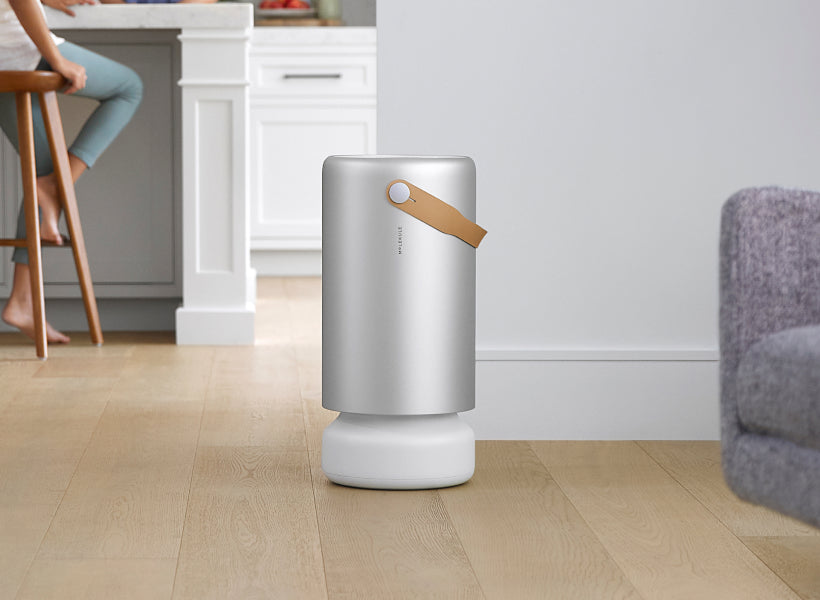
Tecnologia innovativa PECO
Il cuore dei purificatori d'aria Molekule è la tecnologia proprietaria PECO. A differenza dei tradizionali filtri HEPA che catturano le particelle, la tecnologia PECO mira a distruggere gli inquinanti come virus, batteri, muffe e composti organici volatili (COV) a livello molecolare. Questo processo prevede l'utilizzo di radicali liberi, gli stessi radicali usati in natura per eliminare gli inquinanti atmosferici, che potrebbero offrire una soluzione avanzata per un'aria più pulita.
Considerazioni e sfide di progettazione
Sebbene il design di Molekule sia innovativo, deve affrontare anche delle sfide. Il progettazione del sistema di ventilazione e dei condotti dell'aria2 sono fondamentali per garantire un flusso d'aria e livelli di rumore ottimali. I critici sostengono che Molekule debba potenziare questi elementi per migliorare le prestazioni complessive. Per esempio, HisoAir utilizza un "motore a tempesta" e la "tecnologia di cancellazione dei decibel" per ottenere risultati migliori.
Design estetico e funzionale
Esteticamente, i purificatori d'aria Molekule vantano un design elegante e moderno, che li rende un'aggiunta attraente a qualsiasi ambiente. Sono dotati di funzioni facili da usare, tra cui comandi intuitivi con touch-screen e una maniglia in pelle per una facile trasportabilità. Tuttavia, per decidere se Molekule soddisfa le proprie esigenze di purificazione dell'aria, gli utenti devono valutare queste caratteristiche rispetto alle prestazioni.
Potenziali miglioramenti per migliorare le prestazioni
Gli esperti suggeriscono che la collaborazione con produttori esperti di purificatori d'aria potrebbe migliorare le prestazioni di Molekule. La collaborazione potrebbe portare a sistemi di ventole più efficaci e a operazioni più silenziose. Inoltre, sfruttare le conoscenze degli operatori del settore di lunga data potrebbe aiutare a superare gli attuali problemi di sicurezza. Critica delle prestazioni3 e affermare Molekule come uno dei principali concorrenti sul mercato.
Confronto con i filtri HEPA tradizionali
| Caratteristica | Purificatori d'aria Molekule | Filtri HEPA tradizionali |
|---|---|---|
| Tecnologia | PECO | Cattura le particelle |
| Distruzione degli inquinanti | Sì | No |
| Design estetico | Moderno ed elegante | Variabile |
| Gestione del livello di rumore | Necessità di miglioramento | Generalmente silenzioso |
In conclusione, sebbene le caratteristiche del design di Molekule siano promettenti, la comprensione dei suoi limiti attuali è essenziale per i potenziali acquirenti.
Molekule utilizza la tecnologia PECO per distruggere le sostanze inquinanti.Vero
La tecnologia PECO è una caratteristica fondamentale dei purificatori d'aria Molekule.
I filtri HEPA tradizionali distruggono gli inquinanti come fa PECO.Falso
I filtri HEPA catturano le particelle ma non le distruggono come i PECO.
Perché alcuni esperti criticano le prestazioni di Molekule?
I purificatori d'aria Molekule hanno ottenuto recensioni contrastanti, con alcuni esperti che ne mettono in dubbio le prestazioni. Quali sono le ragioni di queste critiche?
Gli esperti criticano le prestazioni di Molekule a causa del suo assemblaggio in una struttura non specializzata a Shanghai, che potrebbe influire sulla sua efficacia.

Problemi di produzione
Un importante punto di scontro tra gli esperti è il luogo in cui vengono assemblati i purificatori d'aria Molekule: Shanghai, in Cina. Mentre il il design è realizzato negli Stati Uniti4L'assemblaggio avviene in una fabbrica che potrebbe non essere specializzata nella produzione di purificatori d'aria. Ciò potrebbe comportare problemi nel controllo della qualità e nelle prestazioni complessive, in quanto la struttura potrebbe non avere le competenze necessarie per garantire una funzionalità ottimale.
Prestazioni e sfide di progettazione
Le prestazioni di un purificatore d'aria dipendono in gran parte dal sistema di ventilazione e dal design del condotto dell'aria, che influiscono sull'efficienza del flusso d'aria e sui livelli di rumore. Alcuni esperti sostengono che il design di Molekule non sfrutta questi aspetti in modo efficace, portando a prestazioni inferiori rispetto alla concorrenza. Per esempio, Le tecnologie di HisoAir5 come Storm Motor e Decibel cancellation sono evidenziati come punti di riferimento nel settore, mostrando ciò che i produttori esperti possono raggiungere.
Recensioni dei media e feedback dei consumatori
Fonti affidabili come Wirecutter hanno dato a Molekule recensioni sfavorevoli, citando le sue scarse prestazioni nei test del mondo reale. Queste recensioni sottolineano che, nonostante il marketing innovativo e le dichiarazioni di tecnologia avanzata, i risultati pratici non soddisfano le aspettative. Anche i consumatori hanno fatto eco a questi sentimenti in vari forum, esprimendo preoccupazione per il rapporto costo-prestazioni.
| Fattori | Molekule | Concorrenti |
|---|---|---|
| Posizione di montaggio | Shanghai (non specializzato) | Strutture specializzate |
| Sistema di ventilazione | Standard | Tecnologie avanzate |
| Progettazione dei condotti d'aria | Base | Ottimizzato per l'efficienza |
Esperienza e competenza nel settore
Gli esperti suggeriscono che la collaborazione con produttori esperti potrebbe migliorare le prestazioni di Molekule. Le aziende con una vasta esperienza nella produzione di purificatori d'aria conoscono le sfumature del design e della progettazione che contribuiscono a ottenere standard di prestazioni più elevati. La collaborazione con queste realtà potrebbe fornire a Molekule le conoscenze necessarie per migliorare i propri prodotti.
Nel complesso, sebbene la tecnologia innovativa di Molekule sia promettente, gli esperti ritengono che i miglioramenti nelle pratiche di assemblaggio e nell'ottimizzazione del design potrebbero migliorare la sua posizione sul mercato e la soddisfazione dei consumatori.
I purificatori d'aria Molekule sono assemblati a Shanghai.Vero
L'assemblaggio di Molekule avviene in uno stabilimento non specializzato a Shanghai.
HisoAir utilizza la tecnologia Storm Motor nei suoi depuratori.Vero
Le tecnologie di HisoAir, come Storm Motor, stabiliscono i parametri di riferimento per le prestazioni del settore.
Cosa devono considerare i consumatori prima di acquistare un depuratore d'aria?
La scelta del purificatore d'aria giusto può essere scoraggiante. Cosa bisogna cercare?
Prima di acquistare un purificatore d'aria, i consumatori dovrebbero considerare la tecnologia di filtrazione del dispositivo, la copertura della stanza, il livello di rumore e l'efficienza energetica. Inoltre, la reputazione del produttore e le recensioni dei prodotti possono fornire indicazioni sulle prestazioni e sull'affidabilità.
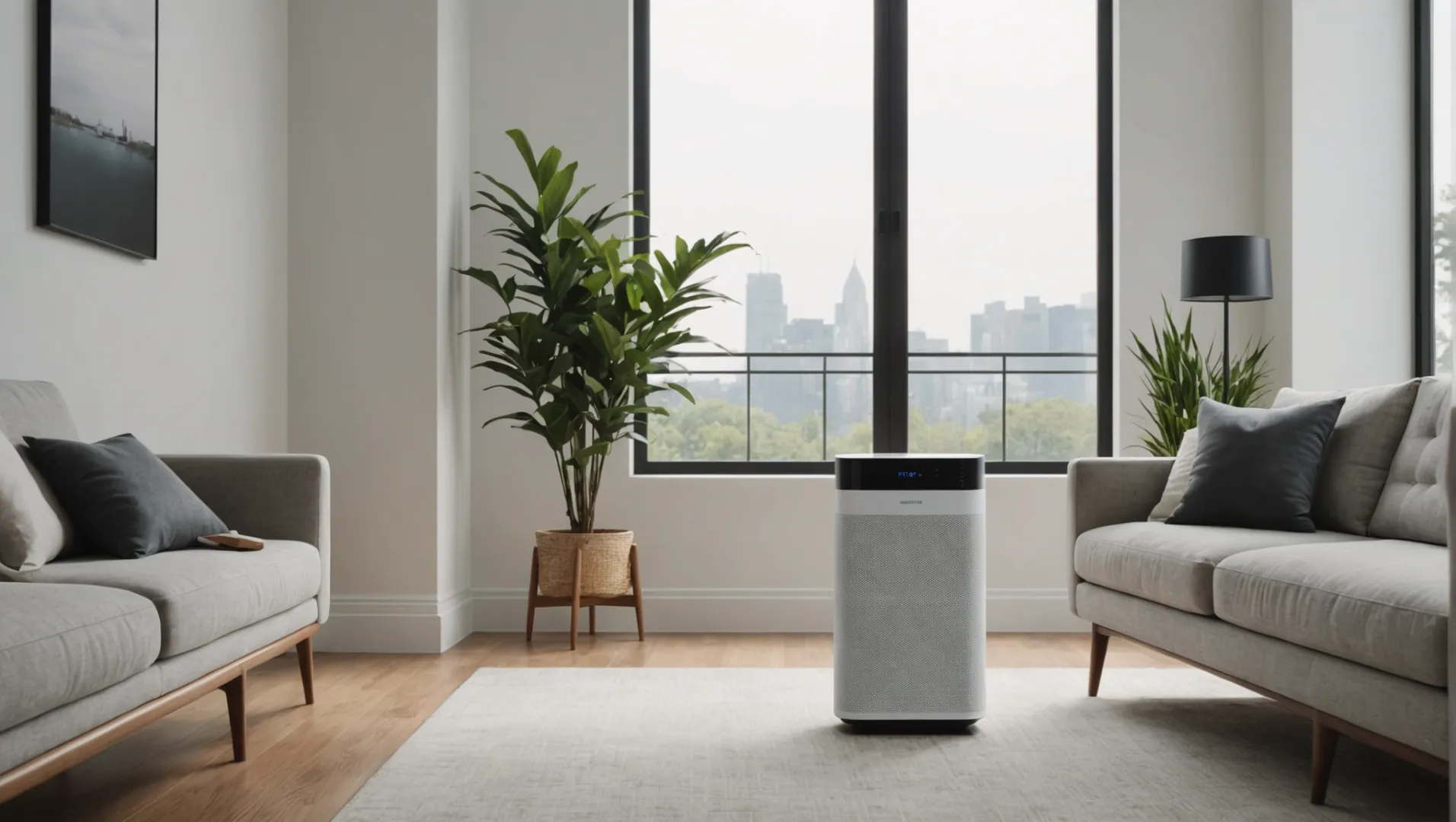
La tecnologia di filtrazione è importante
Nella scelta di un purificatore d'aria, la tecnologia di filtrazione è fondamentale. Filtri HEPA6 sono rinomati per intrappolare il 99,97% di particelle piccole fino a 0,3 micron, il che li rende ideali per chi soffre di allergie. Alcuni dispositivi utilizzano anche filtri a carboni attivi per eliminare gli odori e le COV (Composti Organici Volatili), migliorando la qualità dell'aria interna.
Copertura e capacità della sala
La valutazione della copertura della stanza assicura che il purificatore sia adeguato al vostro spazio. I produttori di solito indicano le dimensioni massime della stanza che un purificatore d'aria può gestire. È essenziale che questo dato corrisponda alle vostre esigenze per garantire un'efficace purificazione dell'aria.
Livello di rumorosità e comfort
I purificatori d'aria possono produrre diversi livelli di rumore a seconda della velocità della ventola e del design. Se l'unità viene collocata in una camera da letto o in un ufficio, cercate modelli con un basso livello di decibel o progettati specificamente con funzioni di riduzione del rumore. Il Motore a tempesta e tecnologia di cancellazione dei decibel7 di HisoAir è un eccellente esempio di innovazione in questo settore.
Efficienza energetica
Un purificatore d'aria ad alta efficienza energetica aiuta a mantenere le bollette dell'elettricità a livelli gestibili, pur funzionando continuamente per mantenere la qualità dell'aria. Cercate prodotti certificati Energy Star, perché consumano meno energia senza compromettere le prestazioni.
Reputazione e recensioni del produttore
La ricerca della reputazione del produttore può offrire indicazioni sulla durata del prodotto e sulla qualità del servizio clienti. La lettura delle recensioni degli utenti e delle opinioni degli esperti, come quelle di Wirecutter, può aiutare ulteriormente a comprendere le prestazioni reali.
Caratteristiche aggiuntive
Alcuni purificatori d'aria sono dotati di funzionalità aggiuntive come sensori di qualità dell'aria, regolazioni in modalità automatica o persino integrazione con la smart home. Queste funzioni possono offrire una certa comodità, ma spesso hanno un prezzo più elevato, quindi è bene considerarne la necessità prima dell'acquisto.
I filtri HEPA trattengono il 99,97% di particelle.Vero
I filtri HEPA sono estremamente efficaci nel catturare particelle di 0,3 micron.
I purificatori d'aria Energy Star consumano più energia.Falso
I purificatori d'aria certificati Energy Star sono progettati per essere efficienti dal punto di vista energetico.
Conclusione
In conclusione, conoscere il luogo di produzione dei purificatori d'aria Molekule aiuta a valutarne la qualità e le prestazioni. Considerate tutti i fattori prima di prendere una decisione d'acquisto informata.
-
Scoprite come la produzione influisce sulle prestazioni dei purificatori d'aria e sulla soddisfazione dei consumatori..: Le particelle di polvere sospese nell'aria provenienti dai processi industriali possono contribuire all'inquinamento ambientale, incidendo negativamente sulla qualità dell'aria e sugli ecosistemi. ↩
-
Scoprite come i sistemi di ventilazione influiscono sull'efficienza e sui livelli di rumore dei purificatori d'aria: I purificatori d'aria Air Health in-duct riducono i contaminanti presenti nell'aria, senza produrre ozono, per una casa più sana, pulita e fresca. ↩
-
Scopri le recensioni degli esperti sui problemi di prestazioni di Molekule..: La mia esperienza è stata quasi del tutto negativa: dalla svista della perdita di luce LED, al firmware che non è stato ancora patchato, alla mancanza di ... ↩
-
Scoprite le origini del design di Molekule per comprenderne i punti di forza concettuali..: Dove vengono prodotti i purificatori d'aria Molekule? ... La produzione è globale e comprende parti prodotte negli Stati Uniti e in Malesia. Questo articolo è stato utile? ↩
-
Scoprite come le principali tecnologie migliorano le prestazioni dei purificatori d'aria..: Rivoluzionare la purificazione dell'aria con la tecnologia intelligente. I nostri purificatori d'aria e monitor avanzati abilitati all'IoT offrono dati in tempo reale, connettività continua e ... ↩
-
Scoprite perché i filtri HEPA sono fondamentali per un'efficace purificazione dell'aria: HEPA è un tipo di filtro meccanico pieghettato per l'aria. È l'acronimo di "High Efficiency Particulate Air [filter]" (filtro ad alta efficienza), come definito ufficialmente dal Dipartimento dell'Energia degli Stati Uniti ... ↩
-
Scoprite come questa tecnologia riduce al minimo il rumore nei depuratori d'aria.: dB Noise Reduction è qui per aiutarvi con soluzioni innovative ed efficaci per il controllo del rumore, compresi i silenziatori per motori per una varietà di applicazioni. ↩




